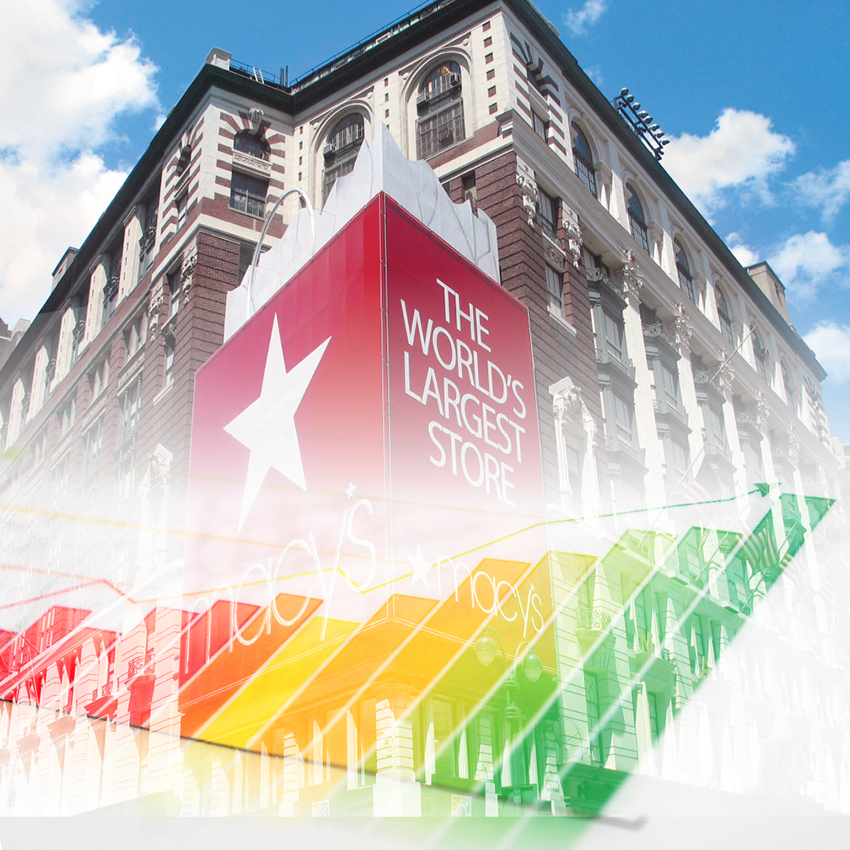Wow Macy’s…at least for now. Q1 results surprised and exceeded Wall Street’s expectations. Furthermore, as CEO Jeff Gennette boldly stated about Macy’s Q1 financial results, “We don’t see this as a short-term pop.” Full of optimism, he said, “There will be a gigantic gift holiday. We are approaching it that way.” In fact, his ebullience over Q1 and outlook through back-to-school and the Holidays, prompted Macy’s to raise its full-year guidance for 2021.
Behind the Numbers
I’m going to skip past the actual numbers. You have probably already seen them anyway, as reported in the entire range of business and financial news sources. As always, short-term quarterly numbers, while a snapshot in time and informative for day traders, never excite me. Leadership’s vision and the strategies to achieve it are the most important measures for predicting long-term success or failure. Of course, the short-term tactical moves provide signals as to whether the business is on strategy.
[callout]Short-term quarterly numbers, while a snapshot in time and informative for day traders, never excite me. Leadership’s vision and the strategies to achieve it are the most important measures for predicting long-term success or failure.[/callout]
Enter Covid as a Wild Card
I want to share my opinion on some of the longer-term strategic repositioning comments made by Gennette and how the three-year Polaris strategy, as updated and presented in February 2020, might result in a completely transformed Macy’s–or not. The objective of the strategy is to stabilize profitability and position the company for growth.
Incredibly, the press release outlining the strategy was dated February 4th indicating that unknowingly, the five-point strategy was about to have a head-on collision with Covid-19, which would stop everything in its tracks and slam Macy’s doors shut for an unknown period. The pillars of the strategy indicated that Macy’s was in a weakened position even before the pandemic. No one could have anticipated how Covid would shutter nonessential businesses and exacerbate Macy’s enormous challenges coming out of the pandemic.
Ironic, counterintuitive and surprising to the financial community, Macy’s Q1 results tend to indicate that many of the five-point Polaris strategies softened the Covid pummeling and could be the harbinger of a successful transformation over the next couple of years.
The Polaris Store Optimization Strategy
In the interest of brevity, I will focus on what, in my opinion, is potentially the game changer for Macy’s future success as well as for the industry in general: what Macy’s defined as “optimizing their store portfolio.” That business concept sounds bland and not nearly as provocative as the new reality that Macy’s could potentially create.
I have read some of Gennette’s comments about what they are doing: “Our customers expect convenience and a tailored experience across all channels. We have an opportunity to build a broader yet integrated Macy’s experience within a metropolitan area by investing in our magnet stores, building freestanding Backstage locations and testing new, off-mall store formats, the more convenient, brand-right touchpoints we have, the greater loyalty and engagement we engender. This will enable us to grow with the next generation of American shoppers.”
And in the WWD coverage of their Q1 results, Gennette expressed, “The company is experimenting with developing ‘ecosystems’ in the Dallas, Atlanta and Washington, D.C., markets involving launching smaller off-mall, brick-and-mortar formats including Backstage and the Market at Macy’s, described by officials as a ‘curated assortment of the best of Macy’s branded fashion within an easy-to shop and open environment.’ The format reflects Macy’s intent to be less dependent on malls, provide greater convenience in an updated setting and become more relevant to customers. Later this year, three new Market by Macy’s will open, as well as the first small format Bloomingdale’s store, to be called Bloomies, in the D.C. area. While innovative, Market at Macy’s won’t have a material impact on the corporation unless the format proves successful and years from now operates many locations across the country.”
I’m reading between the lines here, looking for confirmation of what I believe will define the successful retail landscape in the future. Macy’s just may be boldly leading the charge.
Theory or Reality?
My prophecy in July 2020 was, “I have this theory that the future post-pandemic retail landscape will be populated by the giant-sized retailers who have successfully survived their pre-Covid downward trend, as well as surviving the downward slope post-Covid. However, since the big brands have such expertise in AI and analytics to drive personalization, including localization, they will change their business models. They will only keep their giant footprints or flagships in select, outperforming urban areas and A-ranked malls (but only AFTER they have been converted into compelling special entertainment and experiential destinations for next-gen consumers). Simultaneously they will evolve into small, personalized/localized neighborhood boutiques (locally curated with plenty of events, interesting food and learning experiences) that they will roll out to become large national specialty chains. Their online businesses are already being baked into the cake at a rapid rate. So, the boutique and omnichannel strategies will be the primary growth engines for the surviving giants.” That’s my prediction and I’m sticking to it.
I believe Macy’s has the potential to make this theory a reality. It will obviously take a long time, lots of capital, a cultural evolution and great leadership. Go for it, Macy’s!




